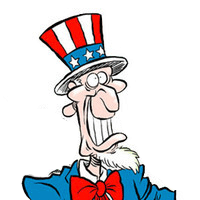Tyler Cowen: The sad decline of the public hangout
Published in Op Eds
You can learn something about a city by just walking through it. Most of New York City’s Manhattan core feels bustling, whereas a San Francisco block can seem dormant. In Rome, it is common to see groups of men standing around, chatting or arguing.
We are all familiar with such casual generalizations, but what might the data show more explicitly? Fortunately, there is new research. We have entered the age where innovative methods of measurement, such as computer vision and deep learning, can reveal how American life has changed.
Researchers at the National Bureau of Economic Research compiled footage of four urban public spaces, two in New York and one each in Philadelphia and Boston, from 1979-1980 and again in 2008-2010. These snapshots of American life, roughly 30 years apart, reveal how changes in work and culture might have shaped the way people move and interact on the street.
The videos capture people circulating in two busy Manhattan locations, in Bryant Park in midtown and outside the Metropolitan Museum of Art on the Upper East Side; around Boston’s Downtown Crossing shopping district; and on Chestnut Street in downtown Philadelphia. One piece of good news is that at least when it comes to our street behavior, we don’t seem to have become more solitary. From 1980 to 2010 there was hardly any change in the share of pedestrians walking alone, rising from 67% to 68%.
A bigger change is that average walking speed rose by 15%. So the pace of American life has accelerated, at least in public spaces in the Northeast. Most economists would predict such a result, since the growth in wages has increased the opportunity cost of just walking around. Better to have a quick stroll and get back to your work desk.
The biggest change in behavior was that lingering fell dramatically. The amount of time spent just hanging out dropped by about half across the measured locations. Note that this was seen in places where crime rates have fallen, so this trend was unlikely to have resulted from fear of being mugged. Instead, Americans just don’t use public spaces as they used to. These places now tend to be for moving through, to get somewhere, rather than for enjoying life or hoping to meet other people. There was especially a shift at Boston’s Downtown Crossing. In 1980, 54% of the people there were lingering, whereas by 2010 that had fallen to 14%.
Consistent with this observation, the number of public encounters also fell. You might be no less likely to set off with another person in tow, but you won’t meet up with others as often while you are underway. The notion of downtown as a “public square,” rife with spontaneous or planned encounters, is not what it used to be.
The internet and mobile phones are likely driving this change in behavior. If there is someone you want to meet up with, it is today much easier to arrange that in advance, rather than hoping for chance encounters. Anecdotally, I have noticed that the notion of a “hangout” is less central to daily life than when I was growing up, though people will talk about “hanging out” on social media such as X or Bluesky.
Another driver of change could be the aging of America. In the 1980s, when I was in my 20s, I sometimes would hang out at the Downtown Crossing area in Boston, but it is unlikely, if I still lived nearby, that I would do so today. As an older person, I am busier and have more pre-established social networks, including in other cities and online. I also find that more people in public spaces are on their cell phones, so what’s the point?
American cities have devoted considerable attention to developing public spaces as a place to meet up and socialize. Some pedestrian-oriented spaces, such as New York City’s Times Square and downtown areas in Cleveland and Philadelphia, among others, are far more animated than they were three decades ago. But perhaps the emphasis on the public square is less appropriate than it used to be, and traffic management, in the broad sense of that term, should be the new priority.
Should we prefer this new world to the old? There is probably no going back, but in the meantime I will be observing public spaces in a new and different way. I am more likely to see the velocity of movement and take stock of the social thinness of what is before me, and thus be all the more in a hurry to get to my next destination.
_____
This column does not necessarily reflect the opinion of the editorial board or Bloomberg LP and its owners.
Tyler Cowen is a Bloomberg Opinion columnist, a professor of economics at George Mason University and host of the Marginal Revolution blog.
_____
©2024 Bloomberg L.P. Visit bloomberg.com/opinion. Distributed by Tribune Content Agency, LLC.




























































Comments